By Howie Katz

Published by an old curmudgeon who came to America in 1936 as a refugee from Nazi Germany and proudly served in the U.S. Army during World War II. He is a former law enforcement officer and a retired professor of criminal justice who, in 1970, founded the Texas Narcotic Officers Association. BarkGrowlBite refuses to be politically correct. (Copyrighted articles are reproduced in accordance with the copyright laws of the U.S. Code, Title 17, Section 107.)
By Howie Katz


Ukraine's President Volodymyr Zelensky is escorted out of the White House
President Donald Trump abruptly halted peace talks between Russia and Ukraine and kicked President Volodymyr Zelensky out of the White House after a blistering Oval Office shouting match between the two leaders.
Friday proved an extraordinary day at the White House, which saw Zelensky walk out of the West Wing and slip into his SUV following an explosive encounter with the president. He was driven away under a flood of camera lights and left dozens of unanswered questions.
The unprecedented scene left Ukraine's future in doubt as the country fights for its life.
Tempers flared on all sides during the Oval Office showdown. Trump threatened to abandon Ukraine completely if Zelensky did not agree to his peace terms. He also accused Zelensky of not being grateful.
Zelensky held his own, even showing Trump photos he brought of the devastation to his country, and arguing he had thanked the American people.
The yelling match was unlike anything ever seen publicly in the Oval Office. And it played out on TV screens across the world.
'You're gambling with World War III,' Trump bellowed Zelensky at one point.
Both men were tense and on the defensive as they repeatedly tried to talk over one another. Oksana Markarova, Ukraine's ambassador to the U.S., seated to the side in the Oval Office, buried her face in her hands.
After the contentious meeting Trump announced he had asked Zelensky to leave.
In a post on Truth Social, Trump wrote:. 'It’s amazing what comes out through emotion, and I have determined that President Zelensky is not ready for Peace if America is involved.
'Because he feels our involvement gives him a big advantage in negotiations. I don’t want advantage, I want PEACE. He disrespected the United States of America in its cherished Oval Office. He can come back when he is ready for Peace.'

Ukraine's President Volodymyr Zelensky departs the White House

The set up for a press conference with Ukrainian President Volodymyr Zelensky and U.S. President Donald Trump which was canceled following their Oval Office meeting
After the cameras left the Oval Office, Zelensky went to a holding room in the West Wing. He and Trump did not meet again.
Trump issued his statement. National Security Advisor Michael Waltz and Secretary of State Marco Rubio, who were in the Oval Office meeting, went and told Zelensky his meetings at the White House were over, a White House official said.
The two leaders never had their scheduled lunch. White House reporters saw it sitting in the hallway outside the Oval Office, untouched.
Trump and Zelensky had been scheduled to participate in a press conference later Friday. That was canceled.
Zelensky was seen exiting the White House about two hours after his arrival. He then posted his own message on social media.
He wrote: : 'Thank you America, thank you for your support, thank you for this visit. Thank you @POTUS, Congress, and the American people. Ukraine needs just and lasting peace, and we are working exactly for that.'
The shocking development comes after French President Emmanuel Macron and British Prime Minister Keir Starmer visited the White House this week in an attempt to gain some sympathy for Ukraine from Trump.
It's not immediately clear how the dramatic fallout will affect peace talks.
But Russia approved.
'The insolent pig finally got a proper slap down in the Oval Office. And @realDonaldTrump is right: The Kiev regime is "gambling with WWIII,"' wrote Kremlin spokesman Dmitry Medvedev on X.
Additionally, the U.S. has given billions to the Ukraine for its fight. Trump and Zelensky were scheduled to sign a deal to give U.S. access to some of Ukraine's rare earth minerals as part of a repayment plan. That trillion dollar deal was not inked.
All this leaves the future of the Ukraine in question.
The day started off pleasant enough with Trump greeting Zelensky at the West Wing door. He even joked the Ukrainian president 'dressed up' for the occasion.
But their Oval Office meeting divulged at the 40-minute mark after Vice President JD Vance accused Zelensky of not being grateful.
That set off Trump. Both men demanded Zelensky say 'thank you.'
Trump was repeatedly shouting over Zelensky as he tried to defend his position.

President Donald Trump and Ukraine's President Volodymyr Zelensky's meeting in the Oval Office became a shouting match

Ukrainian President Volodymyr Zelensky leaves the White House

It started when Trump got pressed on historic Russian domination of its neighbors and repositioning the U.S. toward Russia.
'If I didn't align myself with both of them, you'd never have a deal,' Trump explained. 'You want me to say really terrible things about Putin and then say: 'Hi, Vladimir. How are we doing on the deal? It doesn't work that way. I'm not aligned with anybody. I'm aligned with the United States of America.'
Then Vice President JD Vance jumped in.
'I will respond to this. So look, for four years the United States of America, we had a president who stood up the press conferences and talked tough about Vladimir Putin, and then Putin invaded Ukraine and destroyed a significant chunk of the country,' said Vance.
'The path to peace and the path to prosperity is maybe engaging in diplomacy.
Then a fight over history ensued, as Zelensky ran through Ukraine's 2014 illegal annexation of Crimea. After Zelensky mentioned 2015, Trump jumped in: 'I was not here.'
'But during 2014 till 2022 … people have been dying on the contact line.


President Zelensky and President Trump both shouted in their meeting
Then he brought up broken ceasefire and other agreements. 'What kind of diplomacy JD was speaking about?,' asked Zelensky.
'I'm talking about the kind of diplomacy that's going to end the destruction of your country, Mr. President, Mr. President, with respect. I think it's disrespectful for you to come to the Oval Office to try to litigate this in front of the American media,' Vance told Zelensky, whose country has been under siege since 2022, and who came to Washington to ink a deal that will give the U.S. access to its rare earth minerals.'
'Right now, you guys are going around and forcing conscripts to the front lines because you have manpower problems, you should be thanking the president,' Vance told him.
Vance accused Zelensky of bringing in dignitaries to his country on 'a propaganda tour'
'Do you think that it's respectful to come to the Oval Office of the United States of America and attack the administration is trying to prevent the destruction of your country?' Vance berated him.
Zelensky tried to respond, but that only got Trump's ire up.
'Don't tell us what we're going to feel, because you're in no position to dictate,' he said.
'You've allowed yourself to be in a very bad position,' Trump told Zelensky, after last week calling him a 'dictator' and blaming Ukraine for starting the war.
Yelling with his face getting red, Trump intoned: 'You're not in a good position. You don't have the cards right now … You're gambling with the lives of millions of people.

Vice President JD Vance injected into the conversation to criticize Zelensky

President Trump gives Zelensky a friendly tap

The day started off pleasantly: President Donald Trump welcomed Ukraine's President Volodymyr Zelensky to the White House
'You're gambling with World War Three. You're gambling with World War Three, and what you're doing is very disrespectful to the country – this country that's backed to you far more than a lot of people say they should have.
'Have you said thank you once, this entire meeting,' Vance said next in the tag team pile-on.
'You went to Pennsylvania and campaigned for the opposition in October,' Vance, said, characterizing Zelensky's trip to an ammunition factory.
'Offer some words of appreciation for the United States of America and the president who's trying to save your country,' he demanded.
'You think that, if you will speak very loudly,' Zelensky tried to counter in his accented English.
'He's not speaking loudly,' Trump said. 'Your country is in big trouble.'
'I know,' Zelensky responded. 'You're not winning. You're not winning this,' Trump told him.
Zelensky got a moment to try to counter, saying ‘in our country, staying strong, from the very beginning of the war, we've been alone, and we are thankful.’
Trump contradicted him, telling him he hadn’t been alone.
‘We gave you, through this stupid president, $350 billion we gave you military equipment,’ he said, overstating the amount of military hardware.
Trump said Zelensky’s men are ‘brave,’ but then told him, ‘If you didn't have our military equipment, this war would have been over in two weeks.’
‘It’s going to be a very hard thing to do business like this,’ Trump said.
That brought Vance back to demanding thanks.
‘Just say thank you,’ Vance told him.
‘I said it a lot of times,’ Zelensky responded.
Then Trump gave remarks indicating the blow-up was serving a purpose for him.
‘I think it's good for the American people to see what's going on. I think it's very important. That's why I kept this going so long. You have to be thankful you don't have the cards. You're buried there. You people are dying. You're running low on soldiers,’ Trump said.
‘You're running low on soldiers. Listen, you're running low on soldiers. It would be a damn good thing. Then you tell us, “I don't want a cease fire. I don't want a cease fire,’ Trump said, delivering a mocking impression of his counterpart. ‘I want to go, and I want this – look, you could get a ceasefire right now, I tell you, you take it so the bullets stop flying and your men stop getting killed.’
‘Of course I want to stop the war. What I said to you – with guarantees,’ Zelensky said. He has been pushing for security guarantees from the U.S.
Shortly after the argument, Trump ended the public part of the meeting.
'This is going to be great television, I will say that,' he said.
As press was being ushered out, President Trump reached over and patted Zelensky's shoulder.
As this all went on, one White House staffer whispered to another: 'This is going to be big.'

"Something small that Yarden Bibas wanted to share with the public (he asked me to do so on his behalf): Every time a rock song played on the car radio, Ariel would make the signature rock gesture together with his father, Yarden. During the funeral yesterday, Yarden and his nephew Alon, the son of Dana, Shiri's sister, shared a small moment dedicated to Ariel," Daum wrote.

Yarden Bibas' rock tribute in memory of his son Ariel, of blessed memory.
This tribute adds to Yarden Bibas' eulogy, which left no eye dry last night. In his speech, he spoke about his children, saying: "Ariel, I hope you're not angry at me that I couldn't protect you properly and that I wasn't there for you. I hope you know that I thought about you every day and every minute. I hope you're enjoying heaven, and I'm sure you're making all the angels laugh," Yarden wept.
To Ariel's younger son Kfir, he said: "I didn't think our family could be more perfect, and then you came and made it even more perfect. I remember your birth. I remember that after Shiri had gone into labor, the midwife suddenly stopped everything, and we got scared, afraid that something had happened, but it was only to tell us that we had another redhead. Mom and I laughed and were happy."

The Enlightenment philosopher Immanuel Kant observed that “out of the crooked timber of humanity, no straight thing was ever made.” Kant’s point was that human actions and the history they create are too complicated and too replete with contradictions to allow for utopian thinking or cast-iron predictions. The latest illustration of that dictum comes in the form of Friedrich Merz, the victor in last week’s German election and the new chancellor in waiting.
Eighty years after the defeat of Adolf Hitler and Germany’s Nazi Party, can it really be said that the leader of a country that conquered Europe, subjugated its nations and murdered its Jews now offers the best hope for the future of the continent, and thereby the rest of the world? Based on Merz’s past record and the promises he made during the election campaign, the answer has to be a tentative “yes.”
Merz’s center-right Christian Democratic Union (CDU) won 208 seats—well short of the 316-seat majority needed to form a government outright but within realistic sight of a coalition government. For now, Merz is focused on parliamentary horse-trading, opening coalition negotiations with the center-left Social Democrats (SPD), whose share of the vote tumbled to just 16.4%—its worst performance for well over 100 years. Extremist parties also performed strongly, with the far-right Alternative for Germany (AfD) leaping into second place above the SPD, and the Left Party, rooted in the former Communist regime in East Germany, coming fourth with nearly 9% of the vote.
If he can’t pull off forming a government with the SPD, Merz will be under pressure to open talks with the AfD, despite his pledge to retain the “Brandmauer” (“firewall”) that has kept the far right out of government in postwar Germany. That prospect may result in the SPD becoming more malleable in negotiations than they otherwise might be.
Once he begins the business of governing, Merz may well find that foreign policy occupies much of his attention, as well as sets the tone for how future generations will remember him. As this century reaches its quarter mark, Merz is assuming the chancellor’s office during a time of profound change for Europe. All indications are that the transatlantic relationship that formed the basis of the world order after 1945 is rapidly unraveling. After being forcibly pulled into World War II—only to emerge as Europe’s main security guarantor during the Cold War—the United States under President Donald Trump is pivoting towards Asia and the Pacific.
As shocked as European leaders say they are by Trump’s move, it’s been a long time in coming. During the twilight of his first term, former President Barack Obama told the Australian parliament that the “United States is a Pacific power, and we are here to stay.” Events over the last decade and a half—trade wars with China, the future of Taiwan, the threat presented by North Korea—underline that a good deal of merit underlies such a pivot. If the United States has to choose a region to prioritize, especially now, with ever-depleting resources and a public that is tired of foreign wars, it won’t be Europe.
Here is where Merz can make a real difference. Despite the estimate of the German commentator Jörg Lau that there is “hardly a more pro-American politician in Germany” than Merz, the incoming chancellor offered a matter-of-fact response to the signals from Trump that Europe’s privileged relationship with America is coming to an end. “It is clear that [the Trump administration] does not care much about the fate of Europe,” Merz declared during a televised debate. As much as that sounds like scolding, it might be better understood as the voice of a politician sniffing out a historic opportunity.
Merz has declared that achieving “independence from the U.S.” in defense matters is his explicit aim. He is pushing for Germany’s defense budget to be boosted by more than $200 billion—no doubt an example Trump would urge other European leaders to follow. Merz and French President Emmanuel Macron, who also sits on the center-right, are leading a push for European nations to take charge of their own defense, warmly citing Poland as a case of a government that has made this a priority, bolstering its defense spending in 2025 to nearly $50 billion.
As daunting as this task will be, it will yield more concrete results than an endless, fruitless debate with a White House that has so far taken a much more benign view of Russia than that found in European capitals. Trump may deem that Moscow is not a threat to Washington—at least not in territorial terms—but it remains the greatest single threat facing Europe. There is much to prevent Russian dictator Vladimir Putin from pushing his forces beyond Ukraine, not least his country’s faltering economy and the eye-watering human cost of his illegal, brutal invasion of his southern neighbor, but any European leader who believes that he will stop there is a fool. Indeed, if Trump does secure a peace deal between Moscow and Kyiv, Putin could well see that as a golden chance to regroup and rearm his forces. The challenge for Merz is to be ready for that eventuality and to be prepared to respond to any further Russian aggression with the use of force, with or without the United States.
A militarily strong Europe with Germany at its center (words that would have been unthinkable for most of the postwar era!) would be good news for Ukraine and other states in Russia’s sights. It would also be good news for Israel.
One of Merz’s first acts after winning the election was to announce that Israeli Prime Minister Benjamin Netanyahu was welcome to visit Germany without fearing that the arrest warrant issued for him by the International Criminal Court in The Hague would be executed on German soil, something the previous government of SPD Chancellor Olaf Scholz wavered on.
Merz has also stated that Germany’s relationship with the Jewish state created from the ashes of the Nazi Holocaust is “unique—no ifs or buts.” Following the Hamas pogrom in southern Israel on Oct. 7, 2023, Merz said that Palestinian asylum seekers would not be welcome in Germany because his country “already has too many antisemites.” He will also take a tougher stance on Iran, having already criticized current German policy as “characterized by the idea of a cooperative government in Tehran” and declaring “this illusion has to be abandoned.”
Merz could, therefore, shape himself into a European leader without precedent: a Reaganite conservative and admirer of American democracy who nonetheless knows that the writing is on the wall as regards U.S. engagement with Europe. If that is the path he follows, we would be wise to hope that he succeeds.
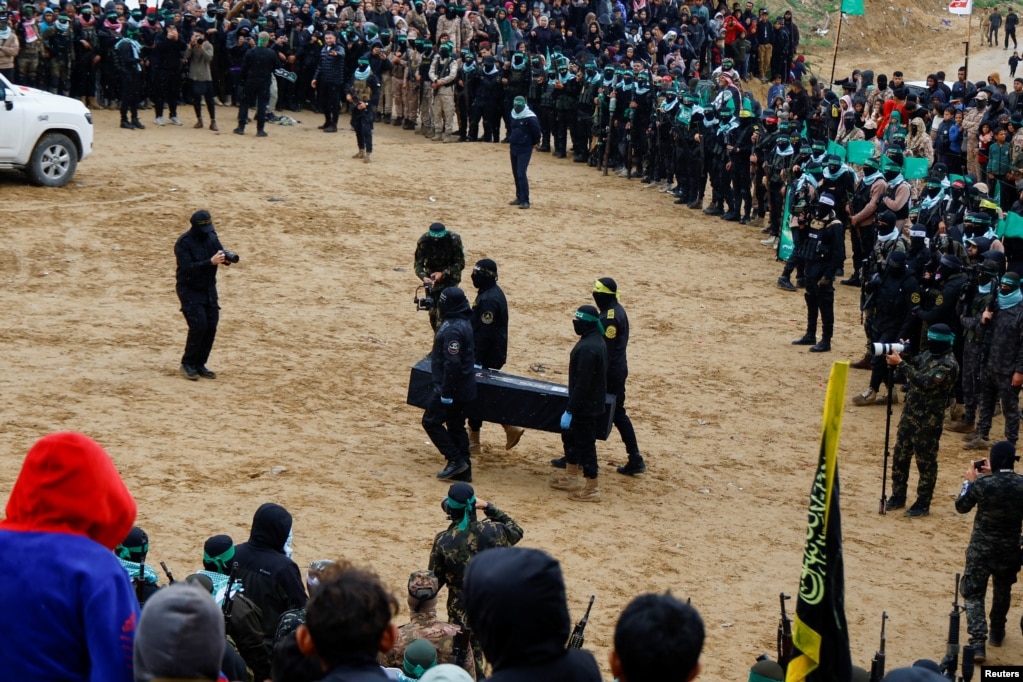
Unless you’ve been living under a rock, you know that the last few weeks have been some of the most difficult since the trauma of the terrorist attacks in southern Israel on Oct. 7. 2023. For a split second, it seemed like the anti-Israel news cycle might calm down—and it felt like we were finally going to get a bit of a breather. But then the hostage swaps began.
These exchanges shifted in nature when the terrorists could no longer parade our kidnapped civilians around, draped in green fatigues, as if they were captured soldiers. Much to our dismay, the remaining hostages would be lifeless bodies.
Originally, Hamas had agreed to return the bodies of the Bibas family without the terrorists’ usual fanfare. In the end, what they did was worse than anything we’d seen before. Three black coffins were paraded through cheering and dancing crowds of Gazan adults and children alike. This spectacle—and the news that followed—tore at the soul of the Jewish people and anyone with any shred of human decency.
The tragedy of the Bibas family, however, has altered public opinion on the Israel-Gaza conflict.
Just before this hostage swap, a story made headlines from Australia. Two nurses—one male and one female—who were passing the time on their shift happened upon an Israeli gentleman in a chat application. Their conversation was recorded and subsequently went viral. Both nurses were Muslim, and when they found out they were conversing with an Israeli, told him that he would soon die. The two divulged that not only would they not treat an Israeli patient, but they had already killed some in their care.
The response to this incident was encouraging, and it’s most likely why the story was overshadowed by the Bibas family’s return home. The New South Wales Health Minister immediately released a strong statement denouncing the comments and fired both nurses. The minister also promised a full investigation of all hospital employees to ensure that such atrocious and unprofessional behavior would not happen on his watch.
This was the correct response, but it wasn’t the only one. More than 50 Muslim leaders and organizations rallied in support of the nurses, claiming that antisemitism was being weaponized against the two and that the public shaming needed to cease.
What’s amazing about this incident is that it exposes how morally bankrupt the attacks on Israel are. Much of the vitriol towards the Jewish state is based on a false accusation that Israel treats its Arab population as second-class citizens. This couldn’t be further from the truth.
Even in the wake of the Oct. 7 atrocities, Israel has gone above and beyond what any nation would do for its enemies. Injured terrorists are provided health care in Israeli hospitals. Even senior Hamas leader Yahya Sinwar—the mastermind of the Oct. 7 massacre—was treated for a brain tumor while in Israeli custody. And still, the Australian nurses threatened any Israeli with death. And let’s be honest, they meant to threaten “any” Jew with death under their watch.
There is no doubt that Messiah’s first stop will be the health-care facilities in Israel. If you’d like to see a glimpse of the coexistence we all long for, it already lives in the hospitals. Israeli medical professionals not only treat every person who’s brought in the door, but many of the doctors are Arab Israelis. This type of cooperation cannot be found anywhere else in the Middle East.
Most Jews have responded to the events in Gaza and Australia with disdain and horror. And rightfully so. The actions in both cases demand repudiation.
But there is a silver lining. These hate-filled actors show the world their true colors. As ironic as it is to say, the masks are off, and it’s causing a shift in public opinion. More and more people are realizing that there will never be a two-state solution and that those who seek our demise only do so out of pure hatred of the Jewish people.
To all those who loathe us, I say keep it coming. The more you parade around the depths of depravity, the more the world can see who you are. As hard as it is to watch and as challenging as it is to be on the receiving end, know that your actions will have far-reaching consequences.
By Bob Walsh
:max_bytes(150000):strip_icc():focal(745x407:747x409)/stephen-scantlebury-mugshot-22225-3742aa181ea44ebd8996b324f72c5a8e.jpg)
By Bob Walsh

Right now the formerly great state of California actually has a pretty good self-defense in the home law. It was passed ages ago when the Republicans were a strong force in the legislature and the Democrats were not all woke psychopaths. The current law creates a presumption (a rebuttable presumption but a legal presumption nevertheless) that if a person forces their way into your home that they are there to do harm to you or others in your home and that force, including deadly force, is likely to be justifiable. The law was passed when honest law-abiding people were sued and prosecuted for shooting people who later claimed that they were there merely to steal property and not harm anybody and that therefore the use of force against them was not legally justified.

'The Invisible Third World War' was written in 1985 by Walter H Bowart. It details CIA experiments on Americans during the Cold War
Fears of World War III are spreading across the globe amid military tensions.
But a recently declassified document claims it already happened — under our noses and in the US.
Two investigative journalists penned a 1985 manuscript that exposed the secret warfare tactics used by world governments, including America's
The work, titled 'The Invisible World War', focused on psychological operations, mind control, and the use of electromagnetic and biological weapons.
The covert attacks were carried out by 'a secret-CIA Army,' which unleashed plagues, bacteria and nerve gas in Hawaii, Alaska, New York, Florida and California from 1949 to 1969 during these covert experiments that killed more than a dozen people.
The experiments on American soil were to test the Army's new warfare tactics and vulnerabilities in America's largest cities that would be target during the Cold War.
They describe it as the invisible war because the bioweapons were being developed without knowledged and could not be detected 'at the very moment they are murdering or robotizing civilian populations.'
In one of the most famous examples, the US Navy sprayed massive amounts of bacteria into the air coast of San Francisco in 1950, which resulted in the death of one American.

Vice Admiral Roscoe H. Hillenkoetter became Director of Central Intelligence on May 1, 1947 and was at the helm of the testing on Americans
The manuscript explained that following WWII, the US wanted to explore weapons that did not lead to a nuclear holocaust.
The authors explained that officials realized 'the only safe way to wage war... was to wage it silently.'
'Invisible Warfare - or IW, as it came to be known - became a necessity,' he added.
'Not only have these weapons been developed without the knowledge of their intended victims, but, worse, they cannot even be detected at the very moment they are murdering or robotizing civilian populations.'
DailyMail.com has reached out to the CIA for comment.
One of the authors, Walter H Bowart is known for his work 'Operation Mind Control' that investigates the history and alleged use of drugs hypnosis, psychological conditioning, and electronic stimulation in the CIA's MKUltra program.
While 'The Invisible Third World War' was never officially published for the public, portions of it are available on the CIA's FOIA Reading Room.
The outline features what Bowart and his co-author, Richard Sutton, hoped to share with the American public.
The report, however, had sensitive information removed when it was released on the CIA website.

It states that the CIA Army used 'trick suitcases and a 1954 Mercury equipped with dual mufflers and extended tailpipes' to release bioweapons in New York City's Lincoln Tunnel (pictured)
But it included a section that details a 'number of experiments conducted on unwitting citizens by the US government.'
It states that the CIA Army used 'trick suitcases and a 1954 Mercury equipped with dual mufflers and extended tailpipes' to release bioweapons in New York City.
The Washington Post published an article in 1979, also found on the CIA website, which claimed the Church of Scientology found records of the attack.
'The CIA may have been involved in 'open air' biological warfare tests in streets and tunnels in New York City are in 1955 and 1958,' the Washington Post wrote.
The analysis included about 600 pages about the agency's MKUltra program, conducted from 1953 to 1964, which aimed to develop procedures and drugs that could be used during interrogations, weakening individuals and forcing confessions through brainwashing and psychological torture.

The Washington Post published an article in 1979, also found on the CIA website, which claimed the Church of Scientology found records of the attack
And many of the subjects were unsuspecting Americans.
The church, which included the group called American Citizens for Honesty in the Government, claimed it uncovered information about 'Operation Big City' during its investigation.
Brian Anderson, the then Church of Scientology spokesperson, said: 'Equipped with tes animals, the CIA-Army team experiment with a variety of devices capable of disseminating a powder or gas into the air under covert conditions.
'Battery driven 'dusters' were installed in suitcases that had been soundproofed to muffle the noise. Similar devices were also constructed to sample the air to determine the effectiveness of the test. Personnel were protected with, at least nasal filter pads.'
The Naval attack in 1950, codenamed 'Operation Sea Spray' used a secret biological warfare experiment to learn how vulnerable large US cities like San Francisco would be to a biowarfare attack by terrorists.

The Naval attack in 1950, codenamed 'Operation Sea Spray' used a secret biological warfare experiment to learn how vulnerable large US cities like San Francisco would be to a biowarfare attack by terrorists

One of the tests sprayed bacteria (pictured) in California that killed one man
The bacteria used were Serratia marcescens, which can cause respiratory issues and meningitis, and Bacillus atrophaeus that can be lethal immunocompromised individuals. At the time, the Navy believed these bacteria were harmless to humans.
But when Bay Area residents began rushing to the hospital, it became clear that was not the case.
After inhaling thousands of bacterial spores, 11 people checked into Stanford Hospital near San Francisco with very rare, serious urinary tract infections that doctors ultimately determined were caused by the experiment.
One patient, a man named Edward Nevin who was recovering from prostate surgery at the time, died.
'Attacks in Florida were followed by an epidemic of whooping cough in which 12 persons died,' the document reads.
The Washington Posts also published an article about the event in 1979 after the Church of Scientology claimed to have analyzed CIA records.
The group said the CIA used a specimen of whooping cough bacteria held at Fort Detrick in Maryland and it was later 'used in tests conducted in the Tampa Bay are nea Sebring,' according to the Scientologists' report.
Medical records at that time showed whooping cough cases increased to 399 and one death in 1954 to 1,080 and 12 deaths a year later.
A spokesperson for the CIA told the Washington Post that the agency had no comment on the report.
However, CIA records showed the agency 'paid for boots contaminated during testing.' The boots were 'purchased in Sebring.'

'Attacks in Florida were followed by an epidemic of whooping cough in which 12 persons died,' the document reads. The Washington Posts also published an article about the event in 1979 after the Church of Scientology claimed to have analyzed CIA records
The last invisible wars detailed in Bowart's report took place in Alaska and Hawaii.
The Associated Press published an article detailing how documents showed that more than two dozen tests of biological and chemical weapons were much more widespread than the military has acknowledged previously.
The Pentagon's records showed the tests were part of Project 112.
Devil Hole I and II took place in Alaska, with the first using sarin gas dispersed from artillery shells and rockets. Sarin is a powerful nerve gas that causes a choking, thrashing death.
The tests occurred in the summer of 1965 at the Gerstle River test site near Fort Greeley.
Devil Hole II used the nerve agent VX, which is a chemical formula that inhibits the enzyme involved in nerve signal transmission.
VX is one of the deadliest nerve agents known and is persistent in the environment because it is a sticky liquid that evaporates slowly.
This test included mannequins in military uniforms and military trucks.
Big Tom was carried out over the Hawaiian island of Oahu in 1965.
The military sprayed bacteria to simulate a biological attack on an island compound and to develop tactics for such an attack. The test used Bacillus globigii, a bacterium believed at the time to be harmless.
Researchers later discovered the bacterium, a relative of the one that causes anthrax, could cause infections in people with weakened immune systems.
The Defense Department acknowledged in 2002 for the first time that some of the 1960s tests used real chemical and biological weapons, not just benign stand-ins.
Following these tests, the US crapped its biological weapons program in the late 1960s and agreed in a 1997 treaty to destroy all of its chemical weapons.
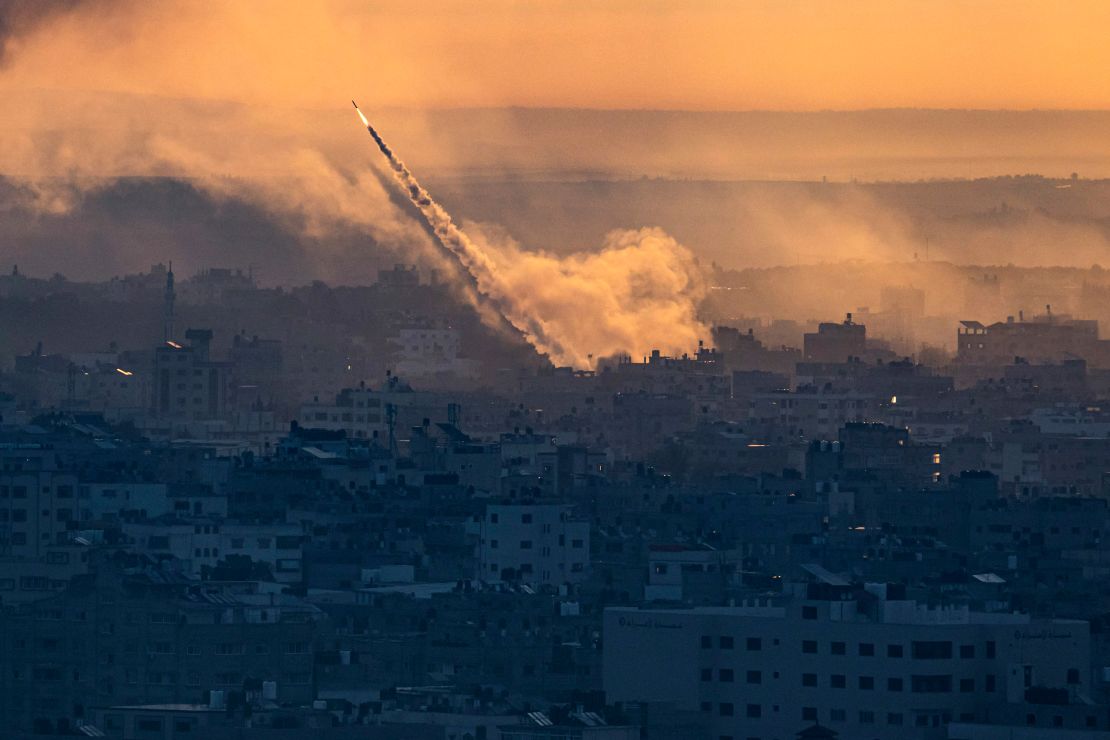
The Israel Defense Forces on Thursday presented its top-level investigations into the military’s failures during the lead-up to the Hamas terror group’s October 7, 2023, onslaught, and on the day itself.
Some 5,000 Hamas-led terrorists from the Gaza Strip burst into southern Israel on October 7, 2023, carrying out a murderous rampage of unprecedented intensity and breadth. The IDF struggled to mount a response, its own probes now specify, with bases closest to the border overrun and the chain of command broken amid the chaos.
The attack claimed the lives of some 1,200 people in Israel, with another 251 people kidnapped and much of the area devastated. Most victims were civilians.
The material released by the IDF underlines the colossal failure for years ahead of Hamas’s invasion, in the final hours before it, and in the course of the terror group’s slaughter and abductions. It was only recognized months after the invasion and slaughter that the military’s Gaza Division, the regional unit responsible for the Strip and for protecting southern Israel, was “defeated” for several hours. The chaos and confusion catastrophically slowed the fightback on the day.
The IDF details intelligence material that was insistently misinterpreted over the years; the military’s overreliance on having an early warning to prepare its defenses; the degree to which troops were massively outnumbered by the invading terrorists; and the failure to understand what Hamas was doing during the attack.
The probes at the General Staff level are focused on four main topics:
The “perception” probe found that the IDF believed, prior to the October 7 onslaught, that the Hamas terror group in Gaza did not pose a significant threat to Israel, that it was uninterested in a large-scale war, that its tunnel networks had been significantly degraded, and that any cross-border threat would be thwarted by Israel’s high-tech border fence.
The investigation highlighted a widening gap between the IDF’s perceptions of Hamas, and what the terror group was doing in reality.
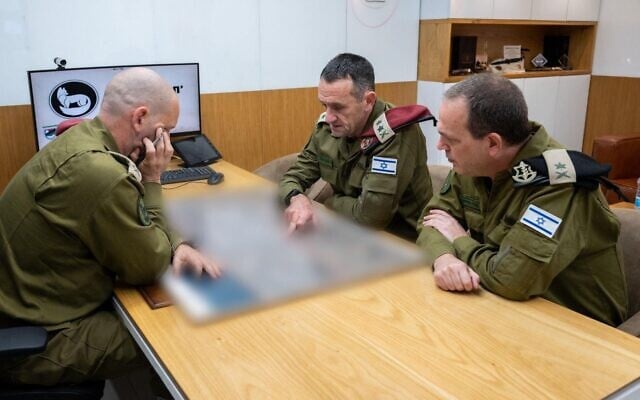
The “intelligence assessments” investigation found that the Military Intelligence Directorate received information and plans outlining Hamas’s intent to launch a wide-scale attack against Israel over a period of several years, but dismissed the plans as unrealistic and unfeasible.
Instead, the Military Intelligence Directorate falsely assumed that Hamas leader Yahya Sinwar was a pragmatist who was not seeking a major escalation with Israel, and that the terror group viewed its 2021 war with Israel as a failure and was focusing its capabilities on rocket fire, and not a ground invasion.
As part of its investigations into its failures during the lead-up to the Hamas terror group’s October 7, 2023, onslaught, the IDF has now determined that Hamas had decided in April 2022 to launch such an attack. By September 2022, the terror group was at 85 percent readiness. And it decided in May 2023 to launch the assault on October 7.
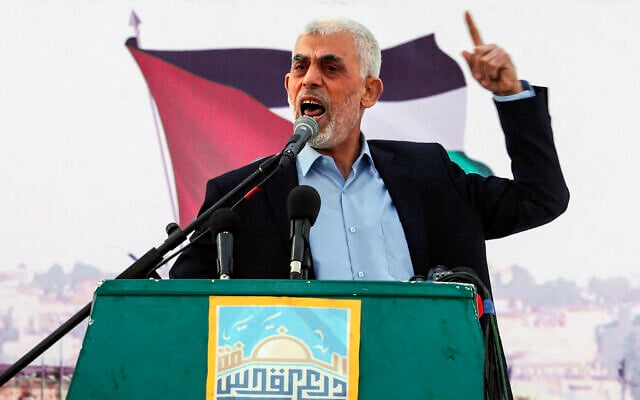
The investigation into the decision-making process made by top officials on the eve of the attack found that the IDF identified five signs of unusual Hamas activity the night before the terror group’s October 7 onslaught, but believed they did not indicate an imminent attack.
This investigation also found that the IDF’s conduct, decision-making, and intelligence assessments on the night between October 6 and 7 were based on the result of years of false assessments about Hamas.
As a result, intelligence officials on all levels failed to provide a warning for what would come.

Finally, the last investigation topic, focusing on the battles on October 7 and the following days, found out only in hindsight the IDF’s Gaza Division was defeated for several hours that day.
As a result of not realizing in real-time that the Gaza Division had fallen, the General Staff did not understand the severity of the attack and failed to put together an accurate picture of the operational situation, which became a major challenge during the efforts to block the attack.
The battles investigation found that the IDF failed to protect Israeli civilians and was not ready for a wide-scale surprise attack.
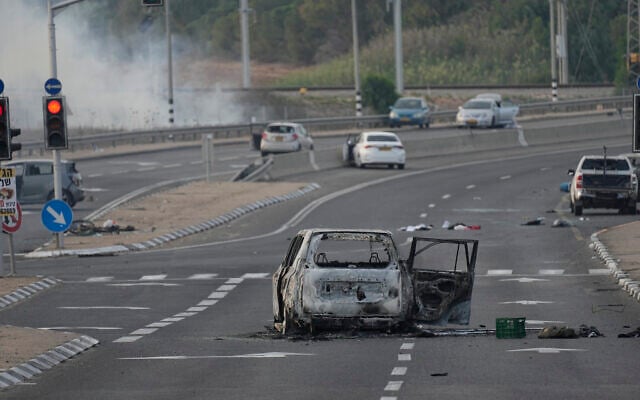
The probes were aimed at drawing operational conclusions for the IDF and did not look into the policies of the political leadership, thereby avoiding a fight with government leaders, who have insisted that investigations must wait until after the end of the war against Hamas.
The investigations — conducted by units seen as having had a role in the failure to notice Hamas preparations or adequately ready themselves for the terror group’s onslaught — were carried out concurrently amid the war.
Thousands of hours were spent by officers on the investigations — collecting material, conducting interviews, and compiling the information.
In addition to the four main topics, the IDF investigated 41 separate battles and major incidents that took place during the October 7 attack.
The IDF has also set up a website (Hebrew link) where the findings will be publicly available after they are presented.
Israel is approaching a critical decision regarding a potential strike on Iran's nuclear facilities. This comes against the backdrop of alarming advancements in various components of Iran's nuclear project and an understanding that this moment presents a strategic opportunity, given Iran's relative weakness and Israel's close coordination with the new US administration.
For the past 15 years, Israel has intermittently considered the possibility of attacking Iran's nuclear sites. The issue peaked in the early 2010s and was one of the key factors leading to the 2015 nuclear deal. Following the agreement, Israel significantly reduced its focus on the matter, redirecting resources elsewhere. After the US withdrew from the deal in 2018 under President Donald Trump first term, Israel did not immediately accelerate its preparations. The directive to intensively resume preparations was issued only in 2022 by then-Prime Minister Naftali Bennett.
This readiness has been maintained even during the ongoing war. In some respects, it has even been accelerated, as long-range strikes - mainly in Yemen and Iran - have provided operational training for complex missions. However, a potential attack on Iran's nuclear facilities would be significantly more complex in terms of the scale of aircraft and weaponry required, as well as the intricate coordination needed among Israeli forces and with external entities.

The next target? Iran's nuclear facility
In recent weeks, discussions on the issue have intensified due to four significant developments. The first is the severe damage sustained by Iran's regional axis, particularly Hezbollah. Iran built the Lebanese terrorist organization as a defensive shield to deter an attack on its nuclear facilities. This was likely one of the reasons Hezbollah refrained from joining Hamas's assault on October 7 and has since avoided full-scale war. Now, with many of its senior officials eliminated and its military capabilities significantly weakened, Hezbollah's ability to assist Iran has been greatly reduced. The organization also likely fears that Israel will seize the first opportunity to eliminate any remaining threats that were not addressed during the recent conflict.
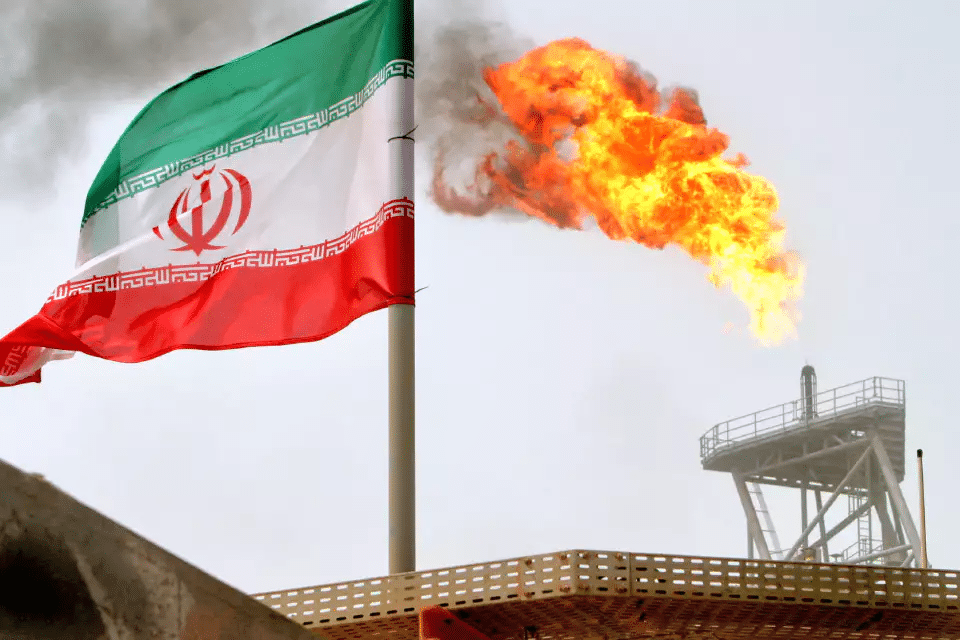
Iran. The Iranian axis has suffered significant damage.
The second development is the direct damage to Iran itself. After Iran's first missile attack in April 2024, Israel responded by targeting the radar system of one of Iran's air defense batteries. This was a signal, one that Tehran failed to heed. Following Iran's second missile strike in October 2024, Israel launched an extensive operation against Iranian air defense systems, effectively leaving Iran "exposed" in many respects and granting the Israeli Air Force significant operational freedom. Since then, Iran has begun rearming with Russian assistance, but estimates suggest it will take another 9 to 12 months before it receives replacement defense systems that could hinder attacks on strategic targets within its borders.
The third key factor is Donald Trump's re-election as US president. While he has hinted at openness to negotiating a new nuclear agreement with Iran, he has simultaneously reimposed "crippling sanctions" on Tehran. It is doubtful that he would restrict an Israeli strike framed as an act of self-defense against a country that has openly declared its intent to destroy Israel. Such an operation would require close coordination between Jerusalem and Washington, which is already taking place through the strong cooperation between the IDF and the US Central Command (CENTCOM).
The fourth development is Iran's accelerated progress in various aspects of its nuclear program. Yesterday, the International Atomic Energy Agency (IAEA) reported that Iran has accumulated 274 kilograms of uranium enriched to 60%, which could be further enriched to the military-grade 90% level within days, sufficient for nuclear bomb production.
This amount is enough for Iran to manufacture six nuclear bombs. At the same time, international media reports indicate that Iran's bomb assembly infrastructure has resumed full-scale operations.
Tehran has yet to officially decide to break out and produce a nuclear weapon, but the three aforementioned factors - regional weakness, lack of air defenses, and Trump's return - could push it in that direction. Senior Iranian officials have hinted at this possibility in recent statements, where, unlike in the past, they have not ruled out the prospect of Iran acquiring nuclear weapons.
Israel is well aware of these developments, and it appears to view this moment as a window of opportunity for action, something echoed in statements from political and security leaders. The ceasefires in Lebanon and Gaza, combined with the confidence gained from recent months of fighting, could bring Israel closer to a decision to strike. This is despite upcoming leadership changes in the IDF, with Maj. Gen. Eyal Zamir set to replace outgoing Chief of Staff Lt. Gen. Herzi Halevi next week.
The message was clear: Hezbollah remains strong and will continue its slain leader’s wicked path.
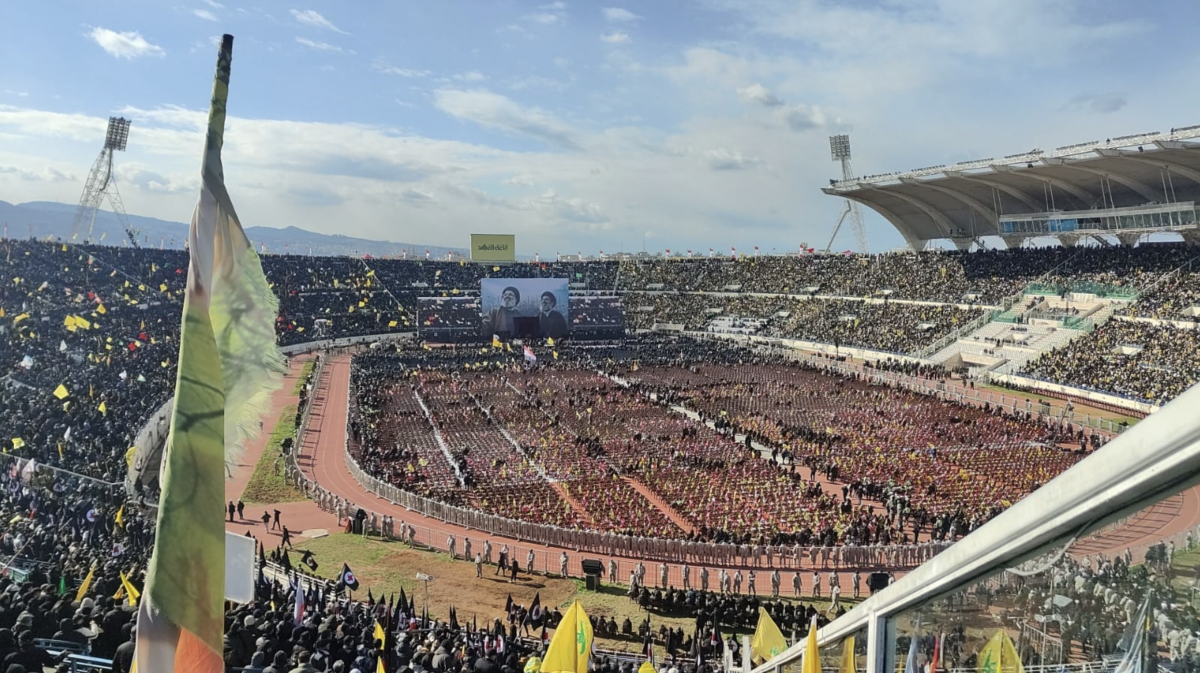
Lebanese attend the funeral of Hezbollah leaders Hassan Nasrallah and Hashem Safieddine at the Camille Chamoun Sports City stadium on the outskirts of Beirut, on February 23, 2025.
Nearly five months have passed since September 27, when Israel dropped 80 bunker-busting bombs on Hezbollah’s headquarters in western Beirut, killing the terror organization’s secretary-general, Hassan Nasrallah, along with other senior officials. This week’s funeral for Nasrallah and his short-lived successor Hashem Safieddine indicates that Hezbollah has not yet recovered from the significant blow it suffered with the death of the man who was Lebanon’s unofficial leader for over two decades.
There were significant disagreements between Hezbollah supporters and opponents regarding the number of participants. While supporters claimed over a million attendees, others insisted the number barely reached 800,000. Nevertheless, the number of participants was substantial, and most were Shiites. There was no foreign presence except for Shiite delegations from Iraq, Iran, and Yemen. The funeral highlighted a divided Arab world, split as usual between Hezbollah supporters and its enemies. Notably, Syrians—who experienced massacres by Hezbollah fighters that fought alongside Bashar al-Assad—stand out among the latter.
Many boasted about the size and organization of the funeral, while others mocked and rejoiced. Below are some examples of sentiments in the Arab world regarding the funeral of Hassan Nasrallah and Hashem Safieddine, whom some labeled as criminals. For instance, Syrians celebrated with an alternative, joyful “funeral.”
Several conspiracy theories circulated during Nasrallah’s funeral. For example, a Syrian Muslim claimed that Nasrallah’s body was not in the coffin and labeled him an infidel and enemy of Muslims, asserting that attending his funeral was religiously forbidden.
One image encapsulates what many Lebanese think and know: that Nasrallah, in life and even in death, served Iranian interests rather than Lebanese ones. This is highlighted by comparing assassinated Prime Minister Rafik Hariri’s funeral to Nasrallah’s. A striking feature of Nasrallah’s funeral was the near absence of Lebanese flags, suggesting that Hezbollah and its leaders have always been loyal to Iran, not Lebanon.
During the funeral, Iranian flags dominated, with few Lebanese ones in sight.
Many Lebanese celebrated Nasrallah’s funeral in their own way, with schadenfreude and jubilation. They not only recognize that he brought disaster upon Lebanon but also personally suffered from his actions. The Beirut Port explosion in August 2020, which killed hundreds, injured thousands, and caused extensive damage, is a prominent example.
The Arab world was not indifferent. Most believe Nasrallah was a tool in Iran’s hands, operated for the benefit of the Iranian regime, with the ultimate goal of subjugating Lebanon to Iran. Many Arab tweeters recalled Nasrallah’s dark past and his dream of turning Lebanon into a satellite of the Islamic Republic—words that came directly from him.
Those who will miss Nasrallah are primarily Shiites, especially allied Shiite militias like the Houthis, the Popular Mobilization Forces, and Iraq’s Hezbollah, led by Abdul Aziz al-Muhammadawi, who attended and wept at the funeral.
Not everyone admired Nasrallah; even the Arab elite despised him due to his ties with Iran, his role in the Syrian war, and his crimes in Lebanon. A journalist tweeted an image of Nasrallah in hell with the Iranian flag, writing, “Cursed be the nation that mourns your departure, cursed be the nation that calls you a martyr.”
Speaking of martyrdom, our correspondent conducted a Twitter poll asking, “Is Nasrallah a martyr?” Over 10,000 participated, with more than 65% saying no, summarizing the prevailing sentiment in the Arab world.
The pompous funeral of Hassan Nasrallah and Hashem Safieddine was held in Beirut without notable incidents. Five months after their deaths, Hezbollah organized a lavish event attended by hundreds of thousands, facilitated by a ceasefire. Current Hezbollah leader Naim Qassem delivered a recorded speech to the crowd. Undoubtedly, it was an elaborate affair, with some calling it one of the grandest funerals in the Arab world this century. The Arab world, particularly Egypt, recalls the massive funeral of President Gamal Abdel Nasser on October 1, 1970. Similarly, the funeral of Hezbollah’s secretaries-general will be remembered in this era.
However, the defeated and weakened Hezbollah used the event as a show of force against the Lebanese state—not Israel—directed inward. The message was clear: Hezbollah still exists and will continue Nasrallah’s path, as Naim Qassem affirmed in his speech. They aimed to demonstrate that they not only persist but also command hundreds of thousands of supporters and allies capable of blocking Beirut’s streets if necessary.
This comes after the new Lebanese president’s inauguration speech, where he promised to transfer Hezbollah’s weapons to the state, effectively disarming the group. The question remains: Will Hezbollah comply without a fight? The answer is almost certainly no; they will only disarm by force.